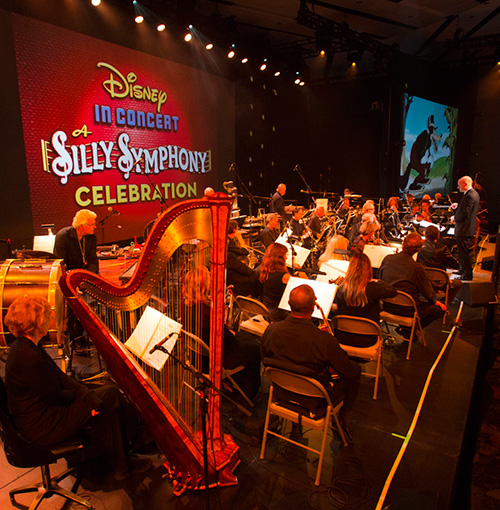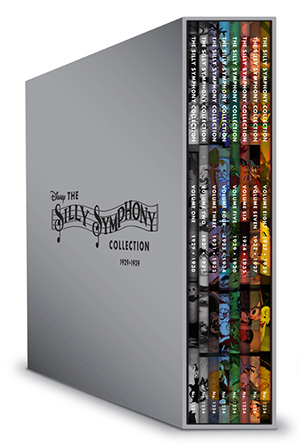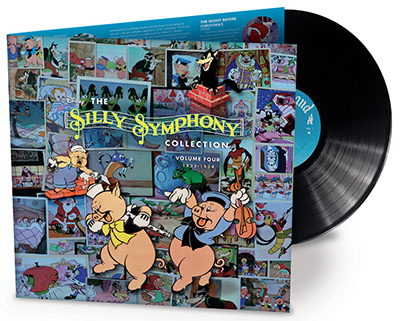

  |
|
|
||||||||||||||||||||||
|
FMS FEATURE... August 18, 2015 Disney in Concert: A Silly Symphony Celebration Maltin hosts, Fox conducts landmark live-to-picture cartoonfest by Jon Burlingame  Photo by Marilee Bradford D23 organizers wisely scheduled two identical 70-minute concerts (at 11 a.m. and 2 p.m.) to accommodate the anticipated crowds. Film historian and Disney expert Leonard Maltin hosted both, which featured a 32-piece orchestra conducted by Steven Allen Fox.  Conductor Steven Allen Fox leading a 32-piece orchestra  Leonard Maltin Just 10 musicians played the score for the first Silly Symphony called Skeleton Dance (1929, scored by Stalling), in which skeletons cavort in a cemetery until dawn. Alexander Rannie, a composer and Disney music expert who restored all these scores for concert performance, said in a pre-concert interview that the original scores (still in Disney's music library) indicated that 10 musicians were likely all Stalling had. Whistles and a wind machine were part of the music-making in this short. Introducing Flowers and Trees (1932, scored by Bert Lewis and Frank Churchill), Maltin noted that Disney was "a constant innovator... pushing boundaries," and that his use of Technicolor in this short marked the very first time that movie audiences saw three-strip Technicolor on the big screen. (It won an Oscar for best animated short.) A highlight of the afternoon was The Three Little Pigs (1933, scored by Churchill), with Disney's first big song hit "Who's Afraid of the Big Bad Wolf." Here, the original vocal tracks were drawn from the cartoon but all other sounds were performed by the orchestra – including the Wolf's knocking on the pigs' doors, done on the actual wood prop used for the original recording more than 80 years ago. Maltin introduced this classic with an amusing, black-and-white re-creation (again, from the Disney TV show) of Disney, songwriter Churchill and the animators coming up with the song.  Performance of The Three Little Pigs The clip introducing The Old Mill (1937, scored by Leigh Harline) had Disney himself explaining that this was "an experimental short subject" designed to help animators find solutions to problems involving depictions of nature including rain and lightning, in advance of his first feature-length animated production, Snow White and the Seven Dwarfs. It also marked the first use of the multi-plane camera to "give a dimensional quality, a feeling of space," Disney said.   The Ugly Ducking (1939, scored by Albert Hay Malotte) offered a heart-warming moment in the concert, but the most exciting moments were saved for last. The concert concluded with Music Land (1935, scored by Harline), another classic that depicted a battle between the "Land of Symphony" and the "Isle of Jazz," a Romeo-and-Juliet tale of a violin and a saxophone who meet and fall in love despite the opposition of their parents from different lands. The orchestra rose to the challenge and earned a standing ovation for their efforts. Attendees were able to take their musical memories home with them, because premiering for sale at the D23 Expo was The Silly Symphony Collection, a 16-LP box set containing, according to Walt Disney Records, "the complete restored soundtracks from all 75 Silly Symphony shorts," more than eight hours of music in all. ©2015 Jon Burlingame |
Search
Past Features
Feature Archives
|